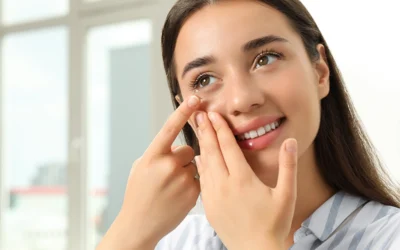Age-related macular degeneration (AMD) is a leading cause of significant vision loss in adults 50 and older. While there is no cure, treatment can slow the progression of the disease and prevent serious loss of vision. In this blog post, we’ll share everything you need to know about AMD, including its primary types, signs to look out for, and treatment options.
What is AMD?
Age-related macular degeneration (AMD) is a disease that affects your central vision. It causes blurred vision or a blind spot in your central vision due to damage to the macula—the part of the eye that allows you to see objects clearly in front of you. AMD does not cause complete blindness, but it can make driving, reading, or other everyday activities difficult.
Types of AMD
There are two main types of AMD: wet and dry. Dry AMD is more common than wet AMD and occurs when fatty deposits called drusen form underneath the macula, causing damage to the surrounding tissues. Wet AMD occurs when abnormal blood vessels grow underneath the retina and leak fluid or blood into the area. This leakage can lead to permanent scarring and the formation of blind spots. Wet AMD tends to progress faster than dry AMD but can be treated with laser therapy or eye injections if caught early.
Signs of AMD
The most common symptom of both wet and dry AMD is blurred or reduced central vision in either one or both eyes. Other signs may include difficulty recognizing faces from a distance or problems with reading small print. However, in its early stages, AMD may have no symptoms which is why regular eye exams are critical to catching this disease early.
If you experience any sudden vision changes or any other concerns related to your eyesight, you should contact an eye doctor immediately. Our eye care professionals can perform a comprehensive eye exam and detect AMD in its beginning stages to help you preserve your sight.
Treatment options
Currently, there are no treatments for dry AMD, but there are ways to slow down the progression of the disease. Certain lifestyle changes, such as quitting smoking, eating healthy, and exercising regularly, can slow down its progression or reduce the risk of it developing. A diet high in omega-3 fatty acids may also help slow the development of the disease.
For wet AMD, there are several treatment options available, including laser surgery and photodynamic therapy. The most common treatment for wet AMD is anti-VEGF injections. These medicines help slow or stop the growth of abnormal blood vessels and slow down vision loss. Your eye doctor will discuss all available treatments with you and recommend the best option based on your specific case.
As we age, our risk of developing age-related macular degeneration increases significantly. For this reason, it is important to schedule regular comprehensive eye exams with an optometrist to prevent vision loss from AMD. If you’re noticing blurred vision or blind spots, contact our office today!




